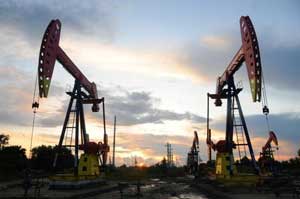Development and classification of oilfield chemicals
Drilling fluid is an important part of drilling engineering. Only the overall consideration of drilling system engineering can ensure the effective performance of drilling fluid. This can fully reflect the effect of “drilling blood”.Drilling fluid is the key to safe and fast drilling and reservoir protection. Keep these two goals in mind throughout the drilling fluid design and maintenance process.At the same time, we should also consider the requirements of environmental protection.
Water-based drilling fluid technology has been improving. The important signs are as follows.
- Reduction of downhole complexity.
- The number of vibration sieves increases.
- The amount of diluent or viscosity reducer decreased.
- The content of bentonite is reduced.
The progress of drilling engineering technology promotes the development of drilling fluid technology. But drilling fluid technology is more dependent on the need of drilling and the emergence of new oilfield additives. This requires understanding the classification of oilfield chemistry.
What are the classifications of oilfield chemistry?
1. Drilling chemistry
Drilling chemistry mainly studies the properties, control and adjustment of drilling fluid and cement slurry.The problems encountered in drilling and cementing mainly come from drilling fluid and cement slurry. Therefore, drilling chemistry can be divided into drilling fluid chemistry and cement slurry chemistry. Drilling chemicals. Including drilling fluid treatment agent.
2. Oil recovery chemistry
Oil recovery chemistry mainly studies the chemical transformation of oil layer and the chemical transformation of oil wells.It is the edge subject between oilfield production engineering and chemistry.Oil recovery chemistry is to study how to use chemical methods to solve the problems encountered in the process of oil production.The problems encountered in the process of oil production include reservoir problems and oil-water well problems.Chemical agents are used in oil and gas development.It includes chemical agents for acidizing and fracturing, including demulsifier, filtrate reducer, bactericide, pour point depressant, water shutoff and profile control agent.
3. Gathering and transportation chemistry
Gathering and transportation chemistry mainly studies the following problems. The corrosion and anticorrosion of buried pipelines, demulsification of emulsified crude oil and defoaming of foaming crude oil, pour point reduction and drag reduction transportation of crude oil, natural gas treatment and oilfield sewage treatment, etc.Gathering and transportation chemistry is a edge subject between gathering and transportation engineering and chemistry.
There are many chemical problems in the process of crude oil gathering and transportation, as mentioned above. All kinds of chemicals are needed to solve these problems. For example, various chemical agents in buried pipeline anticorrosive coating, emulsified crude oil demulsifier, foaming crude oil defoamer, crude oil viscosity reducer and drag reducing agent, various natural gas treatment agents and oilfield sewage treatment agents.
The chemicals used for EOR include polymer and surfactant oil displacement agent, chemicals for oil and gas gathering and transportation (including pour point depressant, viscosity reducer, etc.) and chemicals for water treatment.
Oilfield chemicals are widely used and varied. There is no generally accepted classification in the world.According to the survey, the classification of oilfield chemicals in various countries is as follows.
- According to the composition and manufacturing process of oilfield chemicals, they are divided into mineral products, inorganic products, general chemicals, natural products and special products.
- According to the application classification, it can be divided into drilling fluid,drilling fluid additives, completion fluid and stimulation fluid, oil recovery and enhanced oil recovery.
- Some classify the composition and application of chemicals into inorganic products, organic products, polymer chemicals, surfactants, solvents and waxing prevention chemicals, chemicals for near wellbore treatment, chemicals for scale prevention, water plugging and bactericides, chemicals for oil pretreatment, chemicals for high viscosity oil transportation, organic and inorganic deposition inhibitors, and improvement of oil transportation efficiency Use chemicals.
- According to the main production process (operation) process of oilfield, it is divided into general chemicals, drilling chemicals, oil recovery chemicals, EOR chemicals, oil and gas gathering and transportation chemicals and water treatment chemicals.






